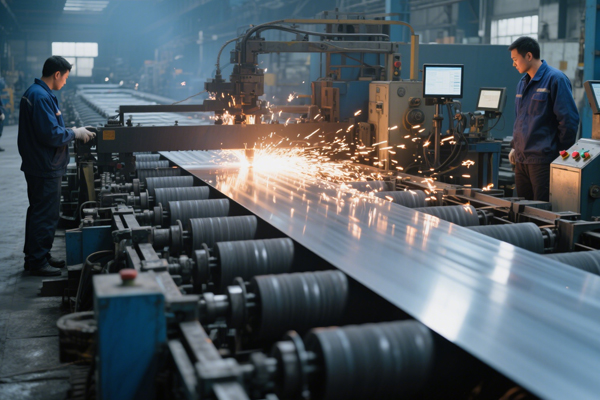What Makes Food-Grade Stainless Steel Different?
When you read the term “food-grade stainless steel,” it’s natural to be curious as to how it compares to the type of stainless steel used in other types of products (like construction, or tools, or anything else around your house). The distinction is with its safety and resistance to contamination; the sum of that equals safety for edibles as in food and drink.
1. Composition and Alloying Elements
Stainless steels that are desirable for food cutter design, such as 304 and 316 type grades most typically used for this application, contain high levels of chromium (usually ≧18%) and nickel. Chromium is included to make it rust-resistant, and the nickel makes it harder and more resistant to acids. More affordable stainless-steel grades (numbered 430 and lower) contain active metallic elements that are easier to corrode, resulting in ‘ferritic’ qualities (which are the same kind that cause a piece of steel to be magnetic).
2. Corrosion and Chemical Resistance
The main distinction is in corrosion resistance for food acids, cleansers/humidity. 316 (known as “marine grade”) stainless also includes molybdenum in its composition, which offers up even more resistance to salt and acid. In this way, the surfaces are protected against tarnishing and do not leach metals, particularly in the case of acidic foodstuffs (e.g. lemon juice, vinegar, salad ingredients).
3. Safety and Hygiene Standards
Food-grade stainless steels adhere to the international standard regulations not only from FDA but also EU. They are non-reactive (non-rusting) with no coatings to chip or melt that do not alter food taste and release anything toxic. Thanks to their non-porous surface, no bacteria can build on them and they are easy to clean (something that is very important for professional kitchens).
4. Applications
From small implements for the kitchen, through to commercial equipment for food processing and handling; food grade stainless steel is one of the most versatile products available. Your lower grade normal pans might be less expensive to work initially, but they’ll also rust, pit and have a higher risk of contaminating themselves, especially when we are talking about food.
So, food-grade stainless steel is characterized by excellent corrosion resistance, good chemical safety as well as hygiene feature which make it a material of choice wherever food safety and security are to be maintained.
References
Azom. (2025, May 2). Food grade stainless steel: 304 vs 316. AZoM. https://www.azom.com/article.aspx?ArticleID=24472 AZoM.
Atlantic Stainless. (2025, August 10). Is all stainless steel food grade? Atlantic Stainless. https://atlanticstainless.com/news/is-all-stainless-steel-food-grade/ Atlantic Stainless.
Kamerud, K. L., et al. (2013). Stainless steel leaches nickel and chromium into foods under certain conditions. PubMed Central (PMC). https://pmc.ncbi.nlm.nih.gov/articles/PMC4284091/ PMC.







